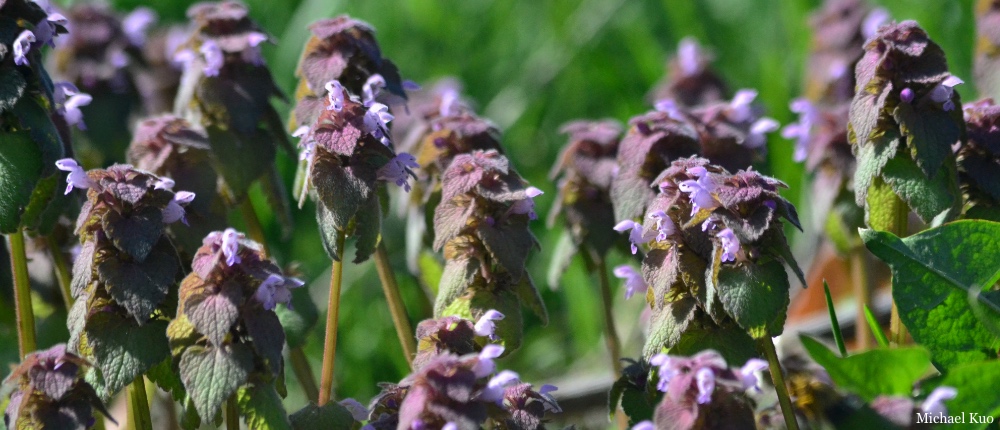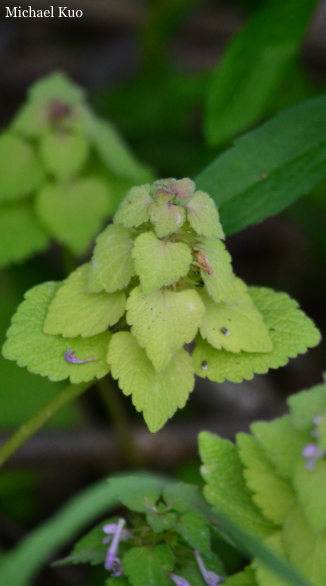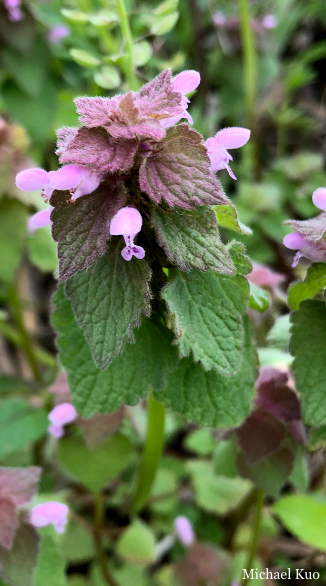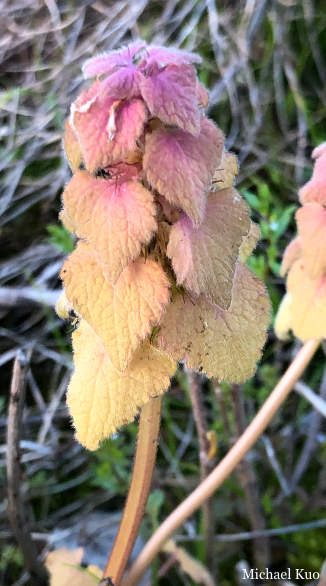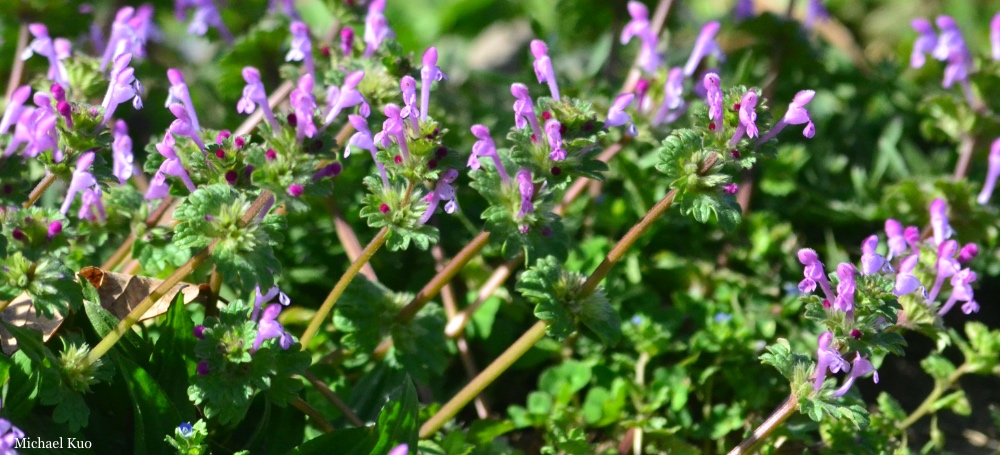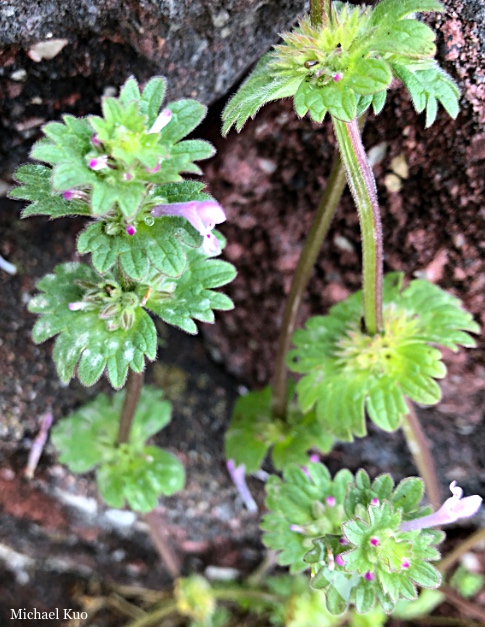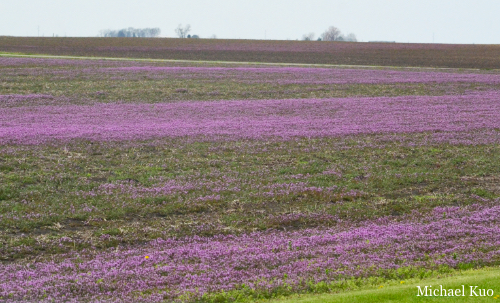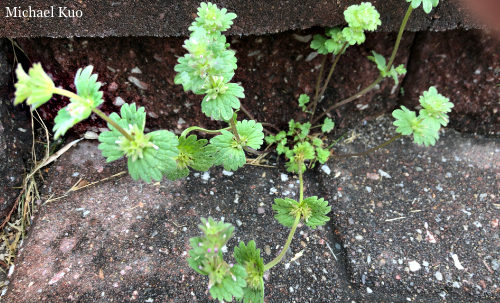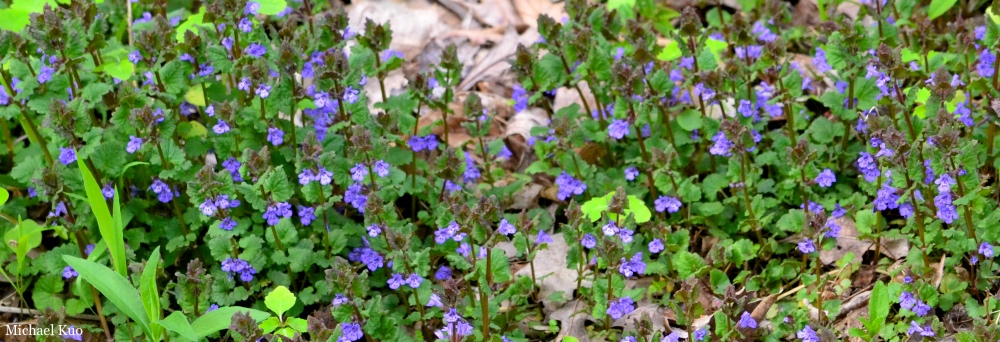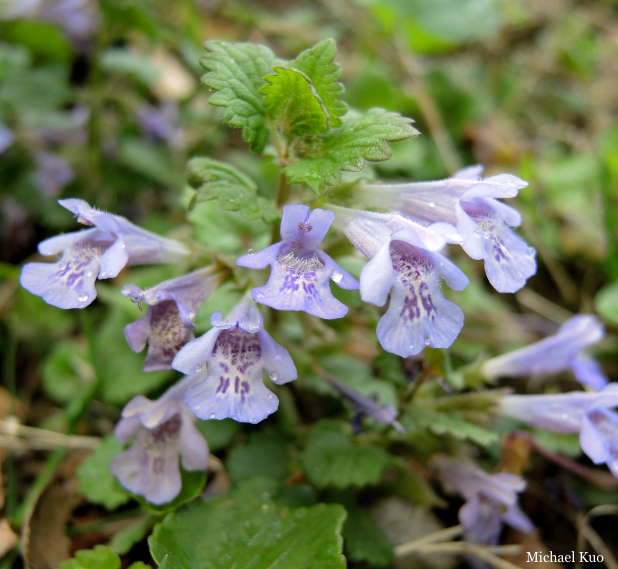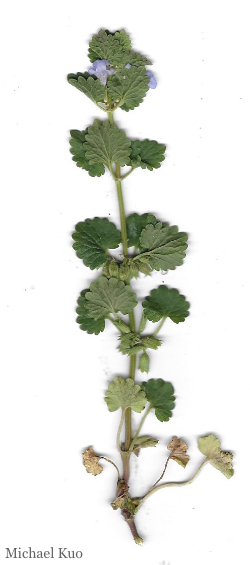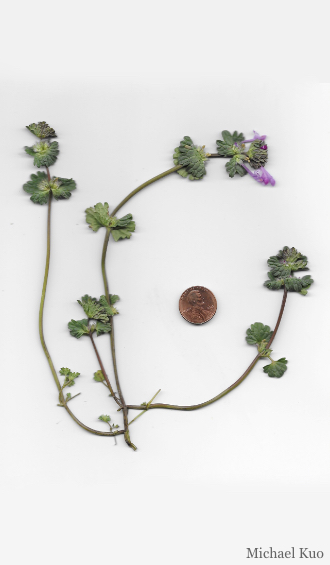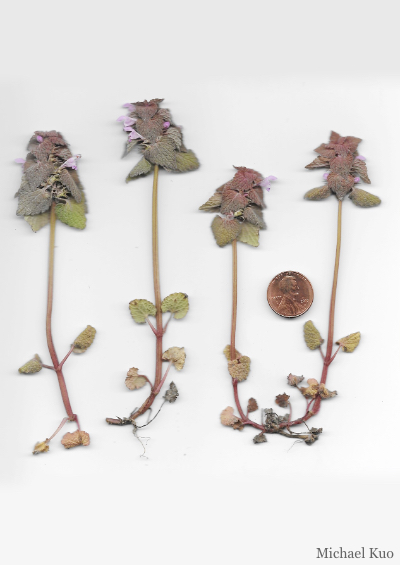 Three easily confused spring flowers |
|
Three easily confused springtime flowers are commonly seen in Midwestern lawns, gardens, fields, empty lots, and other untended, disturbed-habitat locations: purple deadnettle (Lamium purpureum), henbit (Lamium amplexicaule), and creeping Charlie (Glechoma hederacea). While these flowers are similar, they are actually pretty distinct on close inspection. Below we have provided illustrations of each of these plants, along with comments on how to identify them. These plants are "invasive species," whatever that means. We will point out: 1) so were oak trees, once, and 2) the term is applied by the most invasive species our planet has ever seen. Anyway, there is no getting these plants out of the Midwest (or anywhere else) now, so we might as well learn to enjoy their beauty. |
 midwestern range for all three flowers |
|
|
|
|
|
|
|
|
|
|
|
|
Which plant is which? Here are unlabeled scanner images of specimens representing the three plants discussed above. Can you identify them? |
|
|
|
|
|
References: GN Jones 1971, Wilkinson & Jaques 1972, RL Jones 2005, Voss & Reznicek 2012, Kurz 2014, Mohlenbrock 2014, Hilty 2020, USDA 2020. Kuo, Michael & Melissa Kuo (May, 2021). Three easily confused spring flowers. Retrieved from the midwestnaturalist.com website: www.midwestnaturalist.com/three_spring_flowers.html All text and images © , midwestnaturalist.com. |
